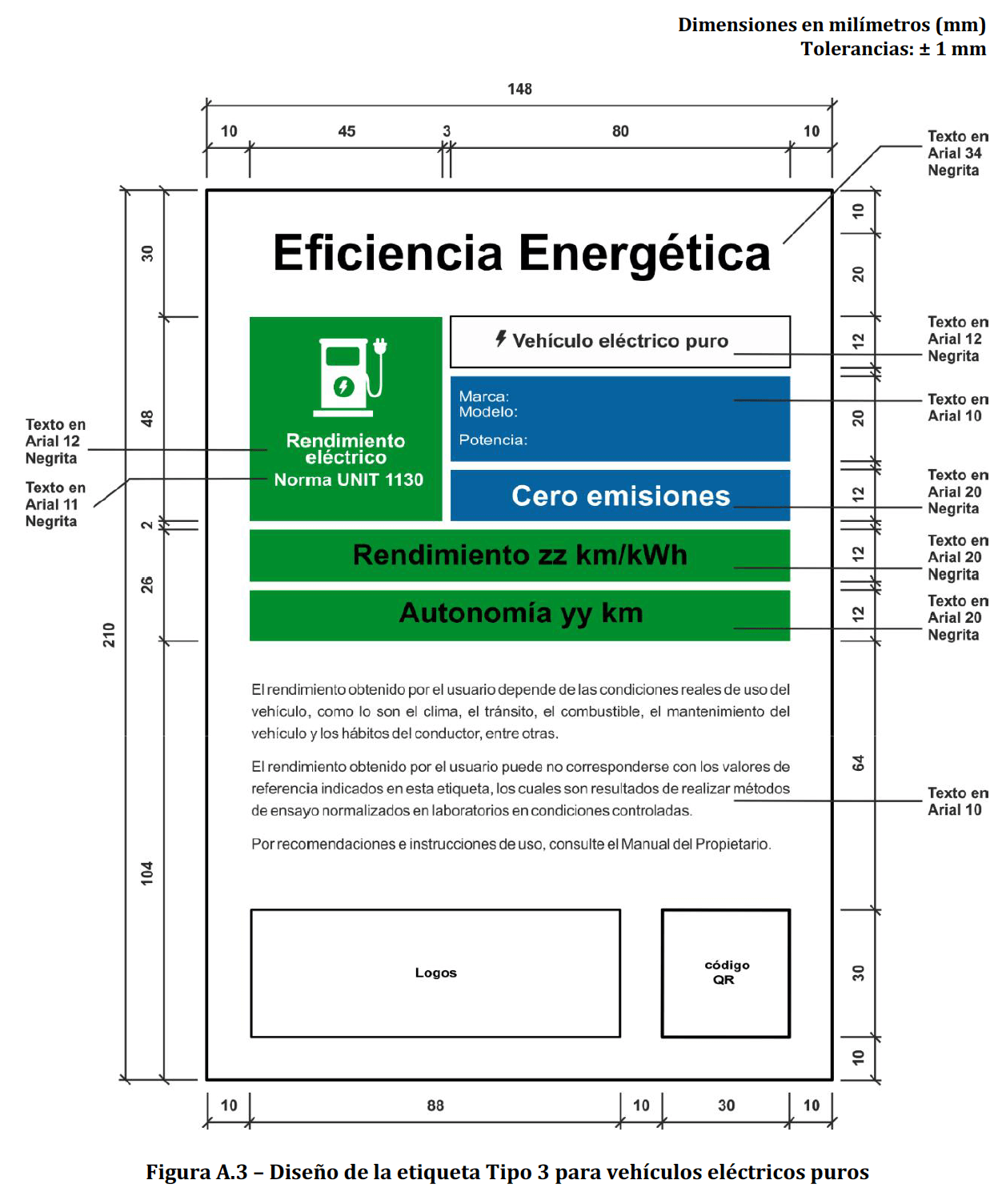What is the vehicle labeling regulation?
Within its objectives of promoting energy efficiency, and as part of a policy to improve the vehicle fleet, the DNE is generating, from the joint work between the Demand, Access and Energy Efficiency (DAEE) area, in collaboration with the MOVÉS project, vehicle labeling regulations.
The objective of the labeling is to indicate reference values for fuel consumption, carbon dioxide emission and the emissions standard of polluting gases of motor vehicles. The autonomy of pure and hybrid electric vehicles with external charging is also indicated.
The UNIT 1130: 2020 standard “Energy Efficiency – Motor vehicles categories M1 and N1 – Labeling’’, establishes the requirements for the energy efficiency labeling of new category M1 and N1 motor vehicles with internal combustion engine, pure electric, hybrid electric with and without exterior recharging and hydrogen fuel cell vehicles.

What are the benefits of labeling?
Once the MIEM regulates the application of the standard, and the period of voluntary labeling adoption by vehicle importers has ended, the user who wishes to purchase a 0 km car will be able to see a sticker indicating fuel consumption per km traveled, as well as the emission of CO2, the main greenhouse gas associated with this fuel. The consumption information will be displayed in km/L for combustion vehicles and non-plug-in hybrids, and in case of electric vehicles and plug-in hybrids, consumption will be represented as km / kWh.
This gives the user the benefit to choose the most energy efficient vehicle from among several vehicle options, as well as being able to differentiate which one is more environmentally friendly.




